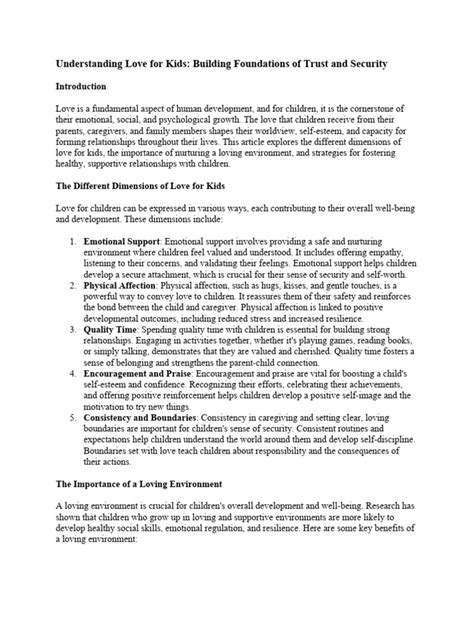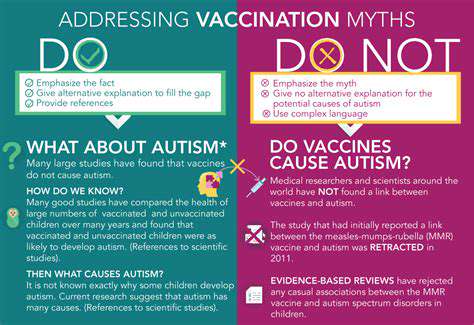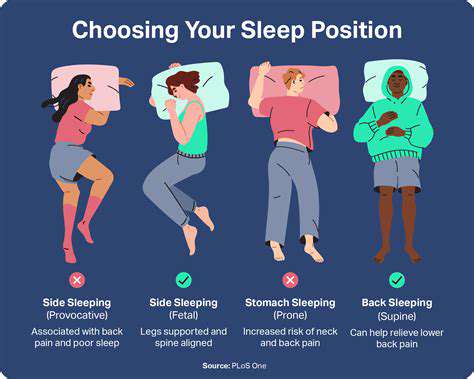How to Teach Your Cat to Do Simple Tricks
Understanding Positive Reinforcement
Positive reinforcement stands as a cornerstone of effective training, emphasizing rewards for desired actions rather than penalties for mistakes. When introducing your cat to a new behavior, the immediate delivery of a high-value treat or praise after the correct action creates a mental link between the action and its pleasant consequence. This method proves far more successful than punitive approaches, which often generate stress and reluctance in animals. The resulting positive association not only accelerates learning but also strengthens the emotional connection between pet and owner.
Cats learn through consistent patterns of cause and effect. By reliably pairing specific behaviors with rewarding outcomes, you effectively communicate your expectations. This approach aligns with feline psychology, as cats naturally seek to repeat actions that bring them pleasure or satisfaction. Unlike punishment-based methods that can damage trust, positive reinforcement builds confidence and willingness to participate in training sessions.
Choosing the Right Rewards
Successful training hinges on identifying what truly motivates your individual cat. While some felines will perform backflips for tuna flakes, others might prefer a session with their favorite feather toy or enthusiastic verbal praise. The secret lies in careful observation and experimentation to discover your cat's personal currency. Remember that preferences may change over time, so maintaining a varied reward repertoire keeps training sessions fresh and engaging.
Consider your cat's unique personality when selecting incentives. Food-motivated cats might work best for small, tasty treats, while playful individuals may respond better to interactive rewards. Some cats even find gentle petting or a special good kitty voice highly reinforcing. The key is to watch for signs of genuine enthusiasm - purring, eager anticipation, or increased participation signal you've found an effective reward.
Consistency and Patience
Reliable repetition forms the backbone of successful training. Using identical cues, rewards, and training environments helps your cat quickly grasp the desired behavior-reward connection. Inconsistency creates confusion, while steady repetition builds understanding. If multiple family members participate in training, ensure everyone uses the same commands and reward criteria to prevent mixed signals.
Training sessions should remain brief but frequent, especially when introducing new behaviors. Cats have limited attention spans, so multiple 5-10 minute sessions throughout the day often prove more effective than one long session. Always end on a positive note with a successful repetition to keep the experience enjoyable for your feline student.
Building Momentum and Tracking Progress
As your cat masters basic behaviors, gradually introduce more complex variations to maintain challenge and interest. This graduated approach, known as shaping, allows cats to build confidence through small, achievable steps. Keep detailed notes on each training session, including the date, behaviors attempted, rewards used, and your cat's response level. This documentation helps identify patterns, track improvement, and adjust your approach as needed.
Celebrate small victories along the way. If your cat progresses from ignoring a command to glancing in the right direction, that represents meaningful improvement worth acknowledging. This positive feedback loop encourages both trainer and trainee to persist through the learning process.
Building a Foundation of Trust and Play

Establishing Clear Communication Channels
Trust flourishes in environments where communication flows openly and honestly. Regular check-ins and transparent discussions about expectations prevent misunderstandings before they arise. This involves not just speaking clearly but actively listening to concerns and responding with empathy. When all parties feel heard and understood, collaboration becomes more productive and relationships strengthen naturally.
Demonstrating Consistency in Actions
Credibility builds through reliable follow-through on commitments. When words and actions align consistently over time, trust becomes almost inevitable. This means showing up prepared for meetings, meeting deadlines, and treating all team members with equal respect regardless of position or circumstance. Small, consistent actions often speak louder than grand but irregular gestures.
Fostering a Culture of Respect
Mutual respect forms the foundation of all productive relationships. Creating an environment where diverse perspectives are valued requires intentional effort at all levels. This includes modeling inclusive language, addressing disrespectful behavior immediately, and creating systems that give equitable voice to all team members. When people feel genuinely respected, they contribute more openly and creatively.
Encouraging Collaboration and Teamwork
Shared goals and collaborative projects naturally build trust through shared experiences. Designing opportunities for cross-functional cooperation helps break down silos and build interpersonal connections. This might involve rotating team members through different projects, creating mentorship pairings, or establishing regular knowledge-sharing sessions. The camaraderie built through working together often translates into stronger trust during challenging times.
Prioritizing Transparency and Accountability
Openness about both successes and challenges demonstrates respect for team members' intelligence and investment. When leaders share information freely and admit mistakes openly, they model the vulnerability that builds deep trust. Clear documentation of decisions, accessible performance metrics, and regular progress updates all contribute to an atmosphere of transparency that supports trust at all levels.
Managing Conflicts Constructively
Disagreements handled well can actually strengthen relationships. Establishing clear conflict resolution protocols before issues arise prevents escalation and preserves trust. This includes training all team members in active listening techniques, creating safe spaces for difficult conversations, and focusing on interests rather than positions during negotiations. When conflicts resolve fairly, trust often emerges stronger than before.
Recognizing and Rewarding Contributions
Acknowledgment of good work validates effort and reinforces positive behaviors. Personalized recognition that aligns with individual values has the most significant impact. Some team members appreciate public praise, while others prefer private acknowledgment or tangible rewards. Understanding these preferences and celebrating achievements regularly builds a culture where trust and motivation flourish together.
Crafting a Consistent Training Routine

Planning Your Training Schedule
A well-designed training regimen balances challenge with sustainability. The most effective schedules accommodate real-life constraints while still driving steady progress. Beginners might start with three weekly sessions, gradually increasing frequency as fitness improves. Always include at least one full rest day between intense workouts to allow for proper recovery and adaptation.
Consider your natural energy rhythms when scheduling workouts. Morning people often find early sessions most productive, while night owls may perform better in the evening. The best schedule is the one you'll consistently maintain, so be honest about your lifestyle and preferences when planning. Flexibility within structure helps maintain consistency over the long term.
Understanding Your Fitness Goals
Clarity of purpose drives program design. Specific objectives like increase squat weight by 20 pounds in three months provide clearer direction than vague aspirations. Different goals require different training emphases - endurance athletes prioritize volume, while strength trainees focus on intensity. Documenting your goals makes it easier to design appropriate workouts and measure meaningful progress over time.
Periodically reassess your goals as your fitness evolves. Initial objectives often shift as you gain experience and your body adapts. Regular check-ins help ensure your training continues aligning with your current priorities and capabilities, preventing plateaus and maintaining motivation.
Choosing the Right Exercises
Exercise selection should serve your goals while respecting your body's limitations. Compound movements like squats and deadlifts deliver efficient, functional strength gains for most trainees. Those with joint issues might substitute machine-based alternatives initially. Always prioritize proper form over weight lifted - quality repetitions produce better results with lower injury risk than sloppy heavy lifts.
Balance pushing and pulling movements to maintain muscular equilibrium. An overemphasis on chest exercises without corresponding back work, for example, can lead to postural imbalances. Rotate exercises every 4-6 weeks to provide novel stimuli while maintaining focus on your primary movement patterns.
Incorporating Rest and Recovery
Muscles strengthen during recovery, not during workouts. Strategic rest periods allow for supercompensation - the process by which the body rebuilds stronger than before. Active recovery techniques like foam rolling, light cardio, or yoga can enhance circulation and flexibility without impeding recovery. Pay attention to subjective indicators like sleep quality, appetite, and motivation levels, as these often signal recovery status.
Deload weeks - periodic reductions in training volume or intensity - help prevent overtraining when programmed every 4-8 weeks. These planned recovery periods allow accumulated fatigue to dissipate, often leading to performance breakthroughs afterward. View recovery as an investment, not an interruption, in your training progression.
Progressive Overload for Continuous Improvement
The principle of progressive overload drives all physical adaptation. Small, incremental increases in challenge - whether through weight, repetitions, or reduced rest periods - stimulate ongoing improvement. Tracking workouts in a journal or app makes it easier to implement systematic progression. Even 2.5% weekly increases compound into significant gains over months of consistent training.
Plateaus often indicate the need for altered stimuli rather than simply more effort. When progress stalls, consider changing exercise variations, rep schemes, or tempo rather than blindly increasing volume. Periodization - the planned variation of training variables - helps maintain progress over the long term by systematically varying stress and recovery.
Nutrition and Hydration for Optimal Performance
Training provides the stimulus for adaptation, but nutrition provides the building materials. Post-workout nutrition timing matters most for recovery - aim to consume protein and carbohydrates within 45 minutes of intense sessions. Daily protein intake should approximate 0.7-1 gram per pound of body weight for those building muscle. Hydration needs increase with training intensity - monitor urine color as a simple hydration gauge, aiming for pale yellow.
Micronutrients from colorful fruits and vegetables support recovery and immune function. Essential fatty acids from fish, nuts, and seeds aid joint health and inflammation control. Consider consulting a sports nutritionist to personalize your approach based on your training demands, body composition goals, and dietary preferences.
Read more about How to Teach Your Cat to Do Simple Tricks
Hot Recommendations
- Review: [Specific Brand] Small Animal Cage
- Why Rescuing Pets Saves Lives
- Best Pet First Aid Kits [What to Include]
- How to Help Stray Animals in Your Community
- Guide to Adopting a Pet When You Have Kids
- Top Reptile Heat Lamps
- Heartwarming Rescue Stories That Will Inspire You
- Review: [Specific Brand] Bird Cage
- Best Aquarium Filters [2025 Review]
- Review: [Specific Brand] Smart Litter Box




![Review: [Specific Brand] Dog Toy [Specific Type]](/static/images/33/2025-05/ValueforMoneyandAlternatives.jpg)



![Review: [Specific Brand] Pet Cooling Mat](/static/images/33/2025-06/EaseofUseandMaintenance3AAPracticalPerspective.jpg)

![My Story of Rescuing a Bird [Story]](/static/images/33/2025-06/ATriumphantReturntoFreedom.jpg)
![My Experience Adopting a Bonded Pair [Story]](/static/images/33/2025-06/TheUnexpectedChallenges.jpg)